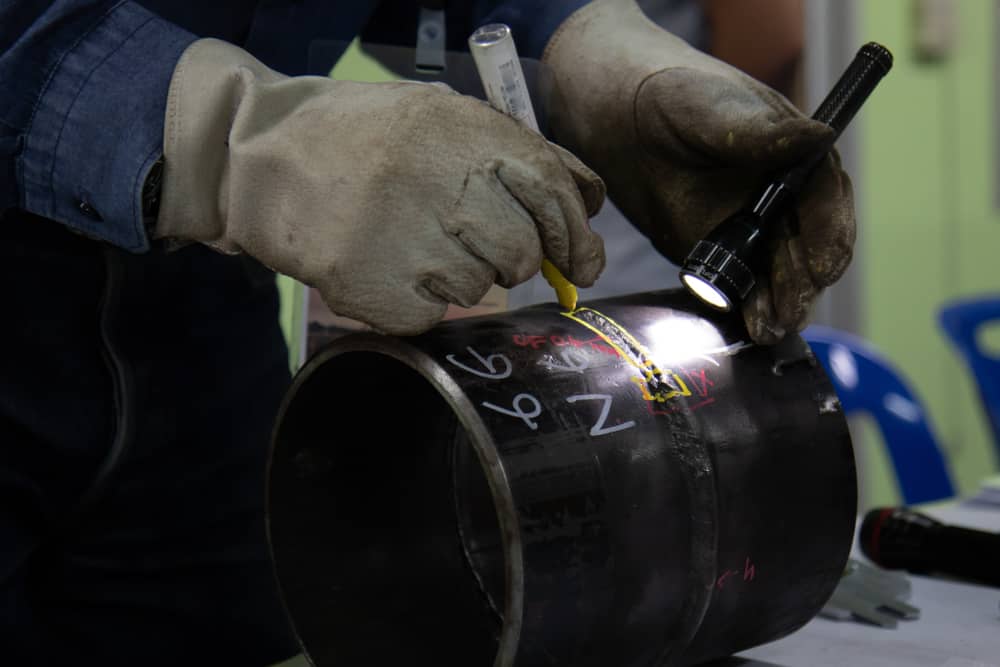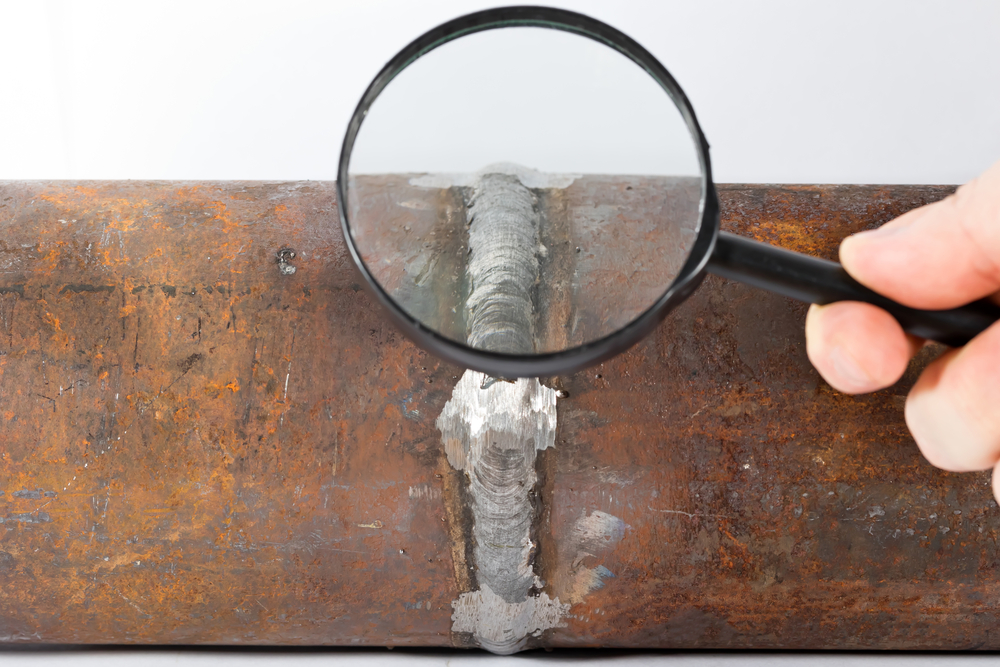A Comprehensive Overview to Welding Assessment Techniques and Finest Practices for Quality Control in Fabrication Projects
Welding examination serves as a basic column in guaranteeing the architectural integrity and safety of made tasks. Establishing reliable methods and a durable top quality management system can enhance conformity and dependability.
Importance of Welding Examination
Welding examination is an essential part in ensuring the stability and safety of bonded structures. The procedure entails a systematic analysis of welds to identify any type of flaws that may jeopardize the toughness and durability of the last item. Effective assessment is crucial not only for compliance with market requirements and regulations yet likewise for protecting the health and wellness of personnel and the public.

Additionally, welding examination serves as a beneficial tool for continuous improvement in construction procedures. Inevitably, focusing on welding evaluation fosters a culture of high quality guarantee, ensuring that jobs satisfy both consumer expectations and regulatory needs.
Common Welding Inspection Techniques
Various methods are employed to examine welds, each tailored to find certain sorts of problems and guarantee high quality. Among one of the most typically made use of techniques are aesthetic assessment, ultrasonic screening, radiographic testing, magnetic bit screening, and color penetrant testing.
Aesthetic evaluation is the most simple strategy, allowing examiners to identify surface abnormalities such as fractures, porosity, and undercutting. Ultrasonic testing utilizes high-frequency acoustic waves to find interior imperfections, supplying a comprehensive analysis of weld honesty. Radiographic testing utilizes X-rays or gamma rays to develop pictures of the weld, exposing interior defects that are not visible to the nude eye.
Magnetic fragment screening is especially effective for ferromagnetic materials, identifying surface area and near-surface problems by using electromagnetic fields and utilizing fine particles that indicate irregularities. Color penetrant testing entails using a colored color to the weld surface area, which leaks right into splits and is disclosed under ultraviolet light, making it simple to detect issues.
Each of these techniques plays a crucial function in keeping welding quality, and the choice of a proper method relies on the particular requirements of the construction project, including product type, weld setup, and the desired degree of inspection.
Essential Evaluation Devices


Measuring tools, consisting of calipers, evaluates, and leaders, are essential for confirming dimensions and tolerances. These instruments help guarantee that welds meet the called for requirements for toughness and longevity. In addition, ultrasonic testing gadgets are used to identify internal imperfections without endangering the honesty of the weld. This non-destructive screening technique is critical for recognizing issues that might not show up on the surface.
Another important tool is the solidity tester, which evaluates the mechanical residential or commercial properties of a weld and identifies its suitability for specific applications. Welding examination software application help in recording searchings for, assisting in data analysis, and making sure compliance with sector standards. With each other, these important examination tools create an extensive arsenal that sustains the welding inspection process, inevitably contributing to the high quality assurance of fabrication tasks.
Finest Practices for Quality Control
In the search of quality control, executing best methods is important for attaining reputable and consistent welding results. Establishing a detailed welding quality administration system (WQMS) is basic. This system ought to incorporate defined treatments, criteria, and paperwork techniques that direct every stage of the welding procedure.
Regular training and qualification of welding personnel are vital. Knowledgeable welders with updated expertise of techniques and security steps contribute substantially to top quality. Furthermore, performing pre-welding inspections guarantees that products and tools meet specified requirements, minimizing the chance of defects.
Integrating real-time tracking throughout the welding process allows for instant discovery of abnormalities, enabling corrective actions to look at here now be taken immediately. Post-welding examinations, consisting of aesthetic checks and non-destructive testing (NDT), are crucial in validating weld stability and conformity with market standards.
Furthermore, maintaining meticulous records of evaluations, weld parameters, and corrective actions cultivates a society of liability and constant enhancement. Engaging stakeholders in regular top quality testimonials can likewise improve the overall effectiveness of quality control procedures. By adhering to these best techniques, companies can substantially elevate their welding quality control initiatives, thus ensuring task success and client fulfillment.
Enhancing Security and Compliance
Attaining high requirements in welding quality control More Help naturally aligns with the important of enhancing security and compliance within the sector. Efficient welding evaluation techniques are critical in determining potential threats and guaranteeing that all processes stick to regulative standards. These strategies not only offer to preserve structural honesty however additionally secure the health and wellness of personnel associated with construction tasks.
Executing strenuous evaluation methods, such as visual assessments, non-destructive testing (NDT), and detailed documentation, develops a culture of security and liability. Training welders and assessors in current safety laws and best techniques is necessary. This guarantees that all employee are mindful of possible risks and are outfitted to mitigate them.
Additionally, conformity with sector standards, such as those established by the American Welding Culture (AWS) and the International Organization for Standardization (ISO), is non-negotiable. Routine audits and assessments help determine voids in safety and security procedures and advertise continuous enhancement - Welding Inspection Milwaukee. Inevitably, a dedication to enhancing security and compliance not just promotes a more secure working environment however likewise causes premium top quality outcomes and reduced liability for organizations engaged in welding construction
Final Thought

Welding evaluation offers as a basic pillar in making sure the architectural stability and safety and security of made projects.Welding assessment is a critical element in making certain the integrity and security of bonded frameworks. Ultimately, prioritizing welding evaluation cultivates a society of quality guarantee, making certain that projects meet both consumer expectations and regulatory demands. With each other, these essential evaluation tools develop a click for more detailed collection that sustains the welding inspection process, ultimately contributing to the quality assurance of fabrication projects.
In conclusion, effective welding evaluation is necessary for making certain the architectural honesty and safety and security of made tasks. Welding Inspection Milwaukee.